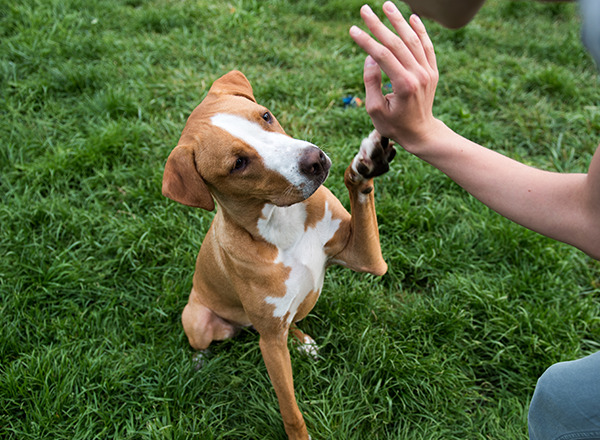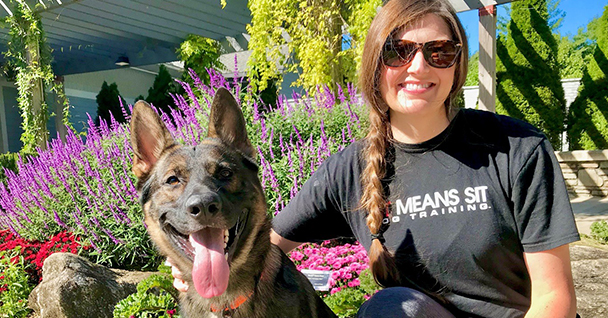Important Tips for Successful Dog Training: An Overview for Family Pet Owners
Effective canine training is a diverse procedure that calls for a tactical method tailored to both the family pet's character and the owner's objectives. Key components such as developing consistent commands, employing favorable reinforcement, and assisting in early socializing play vital roles in promoting a well-adjusted canine companion. Numerous family pet owners encounter challenges that can hinder progress, leading to disappointment and uncertainty. Recognizing exactly how to navigate these obstacles can substantially improve the training experience, ultimately transforming the relationship between owner and dog. What are the crucial strategies that can be employed to guarantee success in this venture?
Recognizing Dog Behavior
Understanding dog behavior is crucial for effective training and fostering an unified partnership between dogs and their owners. Canines connect mostly via body language, vocalizations, and activities, making it vital for owners to translate these signals precisely. Acknowledging a pet dog's pose, tail placement, and ear orientation can provide insights right into its emotional state. A wagging tail does not constantly show happiness; it can likewise signify enjoyment or stress and anxiety.

Socialization plays a significant function in canine habits; exposure to numerous settings, individuals, and various other pets can considerably affect a dog's character. Furthermore, aspects such as breed features and specific temperament should direct training techniques, as some breeds might have certain behavior attributes that demand tailored strategies. By comprehending these components, owners can develop a supportive atmosphere that encourages positive behavior, bring about effective training end results and a deeper bond with their pets.
Developing Constant Commands
Effective interaction with your canine begins with establishing constant commands. This foundational aspect of training is essential for promoting understanding between you and your pet dog. Consistency in the commands you utilize ensures that your canine can reliably associate specific words or expressions with the wanted behaviors.
When choosing commands, choose clear, distinct words that are very easy to say and separate from one an additional. Stay clear of using similar-sounding commands that may confuse your pet dog. Utilizing "rest" and "remain" is suitable, but "sit" and "hit" might lead to misunderstandings.
In addition, preserve the exact same tone and quantity for each command. Pets are delicate to vocal cues, so varying your tone can develop complication.
It is equally important to guarantee that all member of the family get on the exact same page regarding the commands made use of. A united front in command usage will certainly stop combined signals and enhance the knowing process.
Favorable Support Techniques
The power of favorable reinforcement in canine training depends on its ability to urge desired behaviors through incentives and appreciation. This method is based in the concept that behaviors complied with by beneficial outcomes are more probable to be duplicated. By incorporating favorable support right into your training routine, you can properly shape your canine's habits in a useful way.
To execute positive support, it's important to recognize what inspires your pet, whether it be deals with, toys, or spoken appreciation. When your pet dog performs a preferred activity, such as resting on command, immediately reward them with a treat or affection. This association in between the command and the positive result reinforces their understanding.
It's vital to timing the incentives properly; providing the support within seconds of the preferred habits aids your pet dog make the link (dog training). In addition, uniformity is essential-- make sure that all relative use the same commands and reward systems to avoid complication

Slowly, you can lower the regularity of treats as your pet discovers the habits, transitioning to applaud or periodic benefits. This technique not only cultivates a strong bond between you and your dog yet likewise advertises a favorable learning environment, making training a pleasurable experience for both.
Socialization and Communication
Consistently subjecting your canine to a selection of environments, individuals, and various other pets is critical for their social growth. Socialization needs to begin early, preferably throughout the crucial home window of 3 to 14 weeks, when young puppies are most responsive to new experiences. However, older pet dogs can also gain from ongoing socializing efforts.
Present your pet to different settings, such as parks, pet-friendly stores, and city locations. This exposure helps them adapt to numerous stimuli, minimizing anxiety and worry feedbacks. Urge positive interactions with other canines and individuals, ensuring that these encounters are secure and regulated to cultivate confidence.
Use organized playdates with genteel canines, as this can improve your dog's social skills and show them appropriate behavior. Obedience courses and training sessions additionally offer exceptional opportunities for socializing, allowing your canine to engage with others in a monitored environment.
Display your pet's body language during communications, as this will aid you gauge their convenience level. Gradually raise exposure to even more challenging situations while website here guaranteeing that each find out here now experience declares. A well-socialized dog is much more most likely to exhibit balanced habits, making them a happiness to have in any setup.
Resolving Typical Training Difficulties
Every pet dog owner will certainly encounter training difficulties at some time, regardless of their pet dog's age or socialization degree. Determining usual issues such as stubbornness, interruptions, and terror can assist in establishing efficient strategies for enhancement.

Disturbances throughout training sessions can derail emphasis. To fight this, start training in a quiet environment with marginal stimulations. Slowly introduce diversions as the pet ends up being extra proficient in commands. Short, regular training sessions are additionally reliable in maintaining focus.
Terror can impede a dog's knowing procedure. Progressive desensitization to the source of fear, coupled with favorable reinforcement, can assist reduce anxiety. Perseverance is crucial; never ever force a dog right into a circumstance that triggers distress, as this might aggravate the problem.
Eventually, understanding and attending to these common challenges with a structured technique will promote a more productive training experience, enhancing the bond between pet dog and owner while advertising reliable knowing.
Conclusion
In recap, effective pet training counts on a detailed understanding of canine actions, the establishment of consistent commands, and the application of positive reinforcement methods. Socializing plays an essential duty in establishing well-adjusted animals, while resolving common training obstacles requires patience and adaptability. By applying these important approaches, pet dog proprietors can promote a solid bond with their dogs and advertise desirable actions, eventually bring about an unified relationship in between human beings and their canine buddies.
Understanding pet dog actions is vital for efficient training and promoting a harmonious partnership between canines and their owners.Socializing plays a substantial role in dog actions; exposure to various Continued settings, people, and other animals can considerably impact a dog's temperament.The power of positive support in pet dog training exists in its capacity to urge wanted habits with rewards and praise. By integrating positive support into your training routine, you can successfully form your canine's behavior in a constructive fashion.
In recap, successful pet training depends on a thorough understanding of canine behavior, the facility of consistent commands, and the application of favorable reinforcement methods.